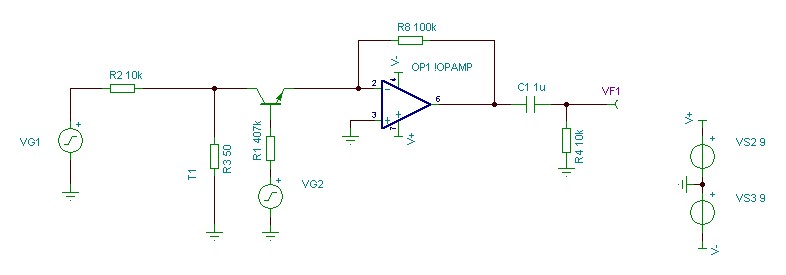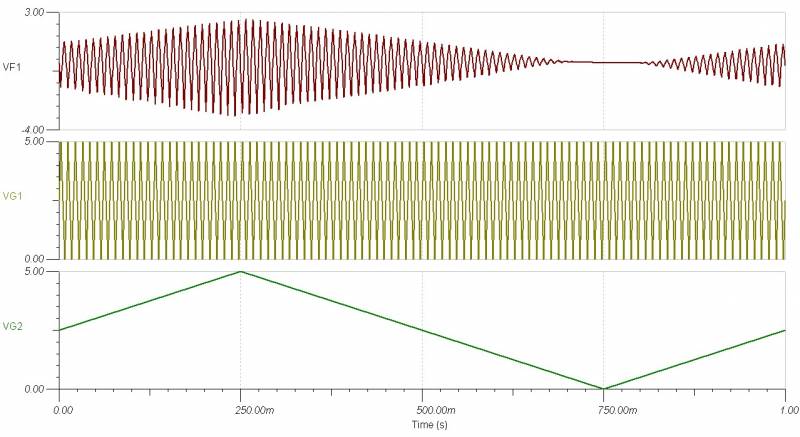Discrete VCA
In my quest to design effective audio applications, I've come accross the issue of building a VCA with 5Vpp audio input while using only easy to find components (i.e. avoiding the use of any OTA).
Concept
The VCA schematic is given herebelow:
The concept is reveresed to creating a control voltage attenuator base on using a transistor in its variable resistor zone. The input signal shall be provided with the maximum output level needed.
how it works
The idea is to feed the input into a 10k + 100R network, operating as a voltage divider, and to propagate the middle point of this dividing bridge to an inverter amplifier through a transistor operated in its variable resistor part.
- VG1 is the audio signal source
- VG2 is the enveloppe control.
Transistor used is a 2N2222, but any type of transistor can be used, the only resistor that will require an update is R1 which may be lowered by a few tens of kOhms as the Beta of the transistor increases in comparison with the one of the 2N2222.
R1 may also be changed if the enveloppe voltage is lower or higher than 5V.
Operation
The behaviour of the VCA is shown herebelow:
The signal is slightly distorted, however the global response is transient friendly.
- 5V triangle signal is fed into the VCA
- Enveloppe voltage range is 5V.
Pros & Cons
Pros :
- Very low component count
- Large dynamic range
- Linear response
- Input signal can have any DC component
Cons :
- Sensitive to noise
- Very sensitive to ground feedback noise
- Slight distorsion on signal
- Attenuator operation, not suitable for low voltage sources
- Linear response :)
Conclusion
When building an analog synth, and looking for a simple way to control amplitude, this schematic provides a handy way to generate signal enveloppe on a 5Vpeak audio signal.
Great care has to be taken on analog design, especially when mixing with digital components. using a dedicated analog ground for this schematic is recommended.

